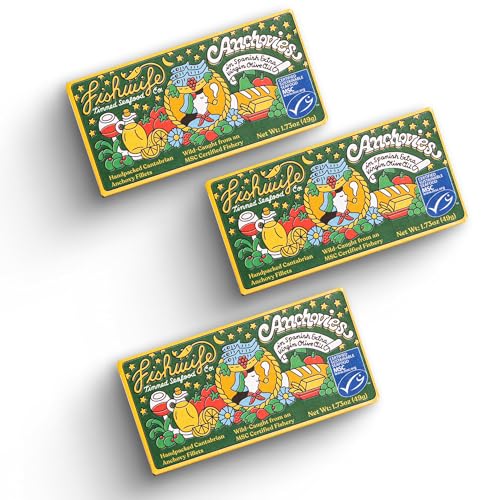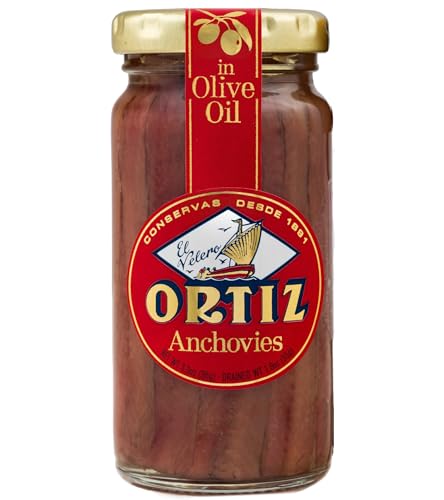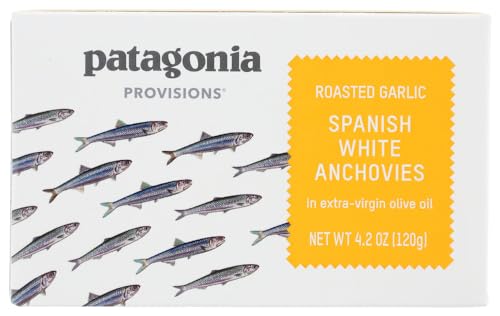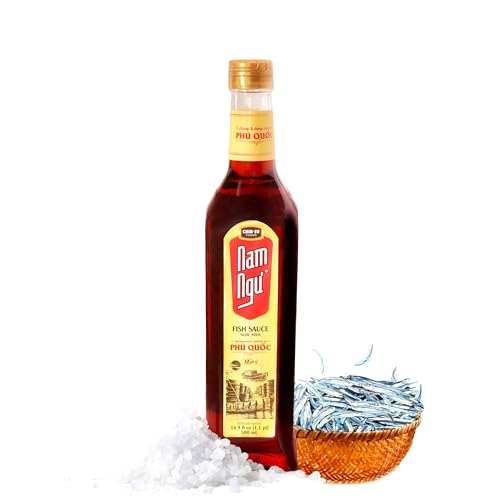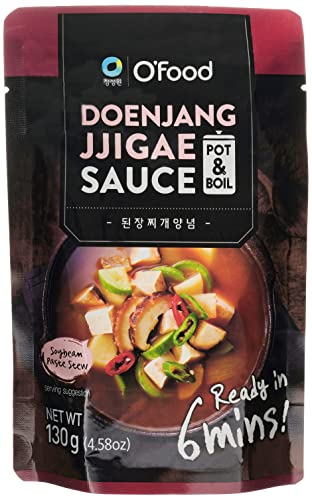Love them or hate them, anchovies are the unsung heroes of bold, umami-rich cooking. These tiny fish often get a bad rap—dismissed as too salty, too fishy, or just plain weird. But here’s the truth: when used correctly, anchovies don’t make your food taste like fish—they make it taste better.
Anchovies are small, oily fish typically cured in salt and packed in oil, and they’ve been a staple in Mediterranean and Asian kitchens for centuries. While their pungent aroma and strong flavor can be off-putting at first glance, anchovies have a secret superpower: they melt into dishes, disappearing into sauces and dressings while leaving behind an unmatched depth of flavor.
What makes them special is their ability to deliver umami, that savory “fifth taste” that makes food feel rich, round, and satisfying. From Caesar salad dressing and pasta puttanesca to slow-simmered stews and compound butters, anchovies amplify flavor in subtle yet powerful ways.
In this ingredient spotlight, we’ll break down what anchovies are, why they’re misunderstood, and how home cooks can unlock their full potential in everyday meals—no fishiness required.
🔥 Why Anchovies Taste So Intense
Anchovies have a reputation for delivering a bold punch—and it’s not just because they’re salty. Their intensity comes from the science of umami, the deeply savory “fifth taste” that makes food craveable and comforting.
The Umami Effect: Glutamates + Nucleotides
Umami is a naturally occurring taste found in ingredients like tomatoes, mushrooms, Parmesan, and—you guessed it—anchovies. This taste is triggered by glutamates (amino acids) and inosinate (a nucleotide), both of which are abundant in anchovies, especially after curing.
When you combine glutamates and nucleotides in a dish—say, anchovies melted into a tomato sauce—their flavor-enhancing powers multiply. That’s why even a single anchovy fillet can make a sauce taste richer and more complex without adding a strong fish flavor.
Fermentation + Curing = Flavor Bomb
Most anchovies sold in jars or tins have been salt-cured and aged for months. This process breaks down the fish’s proteins into free amino acids, deepening the umami while softening the texture. It’s essentially a natural fermentation, and it’s what gives anchovies their signature punch—salty, briny, savory, and a little funky (in a good way).
This long curing process concentrates the flavor in the same way aging transforms cheese or dry-aged beef. The result? A compact umami bomb that’s ready to explode in your cooking.
Why They Melt (and Not in a Fishy Way)
One of anchovies’ best tricks is their ability to disappear into food. When heated in oil or mixed into a sauce, they dissolve completely—no chunks, no lingering fishiness. What’s left is a deep, savory backbone that enhances everything around it.
So if you’re worried about anchovies overpowering your dish, don’t be. Used properly, they vanish in the pan but leave their flavor behind—kind of like culinary magic.
👨🍳 How to Use Anchovies Like a Pro
If anchovies still conjure up images of overpowering pizza toppings, it’s time for a reintroduction. Anchovies are a versatile, stealthy ingredient that can quietly elevate a dish from good to unforgettable. The key is knowing how to use them—and when to let them shine or disappear.
Classic Anchovy Uses That Pack Flavor
Anchovies are behind some of the most beloved recipes in the culinary world:
- Caesar Dressing: The original recipe calls for anchovy fillets, not just Worcestershire sauce. They create the dressing’s deep, salty umami base.
- Bagna Cauda: A warm Piedmontese dip made with anchovies, garlic, and olive oil. Perfect for dunking vegetables or crusty bread.
- Puttanesca Sauce: Anchovies melt into the olive oil to create a robust foundation for this bold pasta dish with olives, capers, and tomatoes.
- Tapenade: A Provençal spread made from olives, anchovies, and capers—rich, salty, and perfect for toast, sandwiches, or roasted veggies.
These recipes use anchovies unapologetically, allowing their flavor to anchor the dish.
Modern Ways to Sneak Anchovies In
Anchovies don’t need to take center stage to make an impact. Think of them as your kitchen’s secret weapon:
- Tomato Sauce: Melt a fillet or two into the oil at the start for a deeper, more savory marinara—no fishy taste, just flavor magic.
- Vinaigrettes: A small dab of anchovy paste adds depth to any dressing—especially good in lemony or mustard-forward blends.
- Compound Butter: Mash softened butter with minced anchovies, garlic, and parsley. Chill and slice over grilled steak, chicken, or vegetables.
- Roast Veggies or Meats: Rub anchovy paste under chicken skin or toss it with olive oil and potatoes before roasting for a flavor boost.
You don’t need a lot—just one or two fillets can transform a dish. Anchovies are less about adding fish flavor and more about enhancing every other element on the plate.
Paste, Fillets, or Fish Sauce: Which Should You Use?
Not all anchovies are created equal. Here’s how to choose the right form for your recipe:
| Form | Best For | Flavor Profile | Tips |
|---|---|---|---|
| Oil-packed fillets | Sauces, dressings, melting in hot oil | Bold, salty, briny | Rinse lightly if too salty; chop or melt |
| Anchovy paste | Dressings, butter, dips, rubs | Milder, slightly smoother | Easy to measure and stir in directly |
| Salt-packed | Gourmet dishes, tapenade, bagna cauda | Most intense, less oily | Needs soaking and cleaning before use |
| Fish sauce (e.g., nam pla) | Southeast Asian or fusion recipes | Liquid umami, funky-salty | Use sparingly; a few drops go far |
Each has its place, depending on your cooking style. For quick everyday use, anchovy paste is a time-saving flavor bomb. For a deeper culinary dive, salt-packed fillets offer the most complex flavor—but need a little prep.
Pro Tip: Always add anchovies early in the cooking process, especially when sautéing in oil. That gives them time to melt and infuse the dish with their signature depth.
🛒 Anchovy Buying & Storage Tips
Not all anchovies are created equal—and when it comes to flavor, quality matters. Whether you’re new to anchovies or looking to level up your pantry game, here’s what to look for and how to store them properly for long-lasting, umami-packed cooking.
What to Look for in Jars and Cans
Anchovies come in a range of styles and price points, and the difference in quality can be dramatic.
- Premium Brands (like Ortiz, Agostino Recca, or Callol Serrats): These offer plump, meaty fillets with balanced saltiness and clean flavor. Typically packed in high-quality olive oil or salt, they’re ideal for dishes where anchovy flavor matters.
- Budget Brands: More widely available and affordable, but often more intensely salty or fishy, with thinner, broken fillets. Great for sauces where anchovies will melt in completely.
Packaging tip:
Look for anchovies in glass jars if you want to reseal and store leftovers easily. Flat tins are convenient for one-time use, but once opened, they require airtight storage.
Salt-Packed vs. Oil-Packed: Pros and Cons
| Type | Pros | Cons |
|---|---|---|
| Salt-packed | Most flavorful and long-lasting; firmer texture | Requires rinsing, filleting, and soaking |
| Oil-packed | Ready to use; melt easily into sauces | Can be overly salty or mushy in cheaper brands |
- Use salt-packed when you want control and top-tier flavor (think: tapenade, bagna cauda).
- Use oil-packed for convenience in everyday cooking—especially when melting anchovies into oil for sauces or dressings.
Storage Tips: Keep Your Anchovies Fresh and Ready
Unopened anchovies (salt- or oil-packed) have a long shelf life in the pantry. But once opened:
- Oil-packed fillets should be stored in the fridge, fully submerged in oil, in an airtight container. They’ll last about 2 months.
- Salt-packed anchovies can be re-covered in salt and wrapped tightly. They can last for months in the fridge when stored correctly.
- Anchovy paste in tubes is super convenient—store it in the fridge and use it within 6 months.
Bonus Storage Hacks
- Anchovy Butter: Mix softened butter with minced anchovies, garlic, and lemon zest. Roll into a log and freeze. Slice off a round to melt over steaks or veggies.
- Frozen Anchovy Cubes: Blend anchovies (or anchovy paste) with a bit of olive oil and freeze in ice cube trays. Use a cube to amp up soups, stews, or sauces instantly.
Pro Tip: If you’re only using one or two fillets at a time, portion extras right after starting so they’re prepped and ready. Your future self will thank you.
❌ Common Anchovy Misconceptions
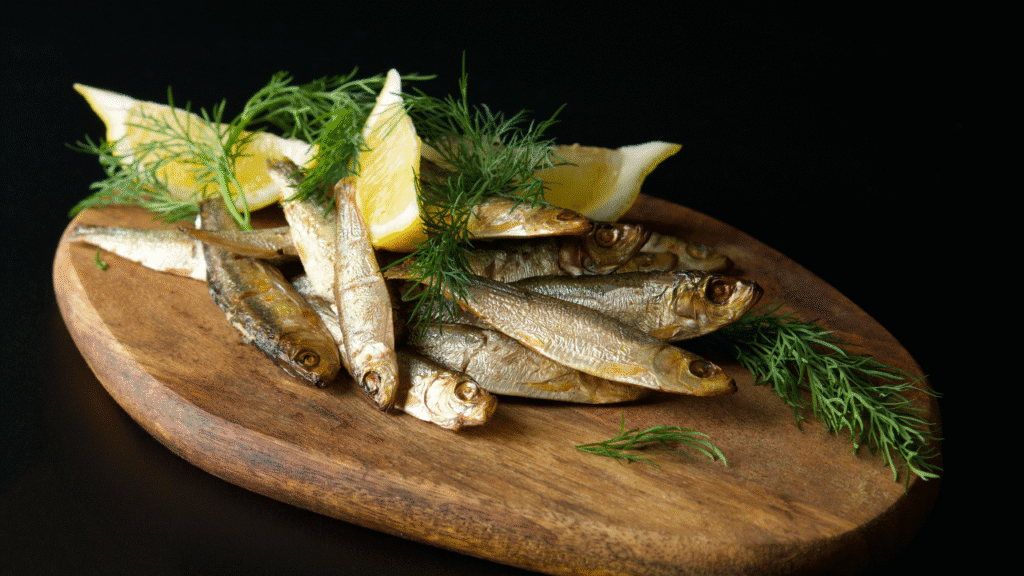
Despite their culinary superpowers, anchovies are still misunderstood—often unfairly. Let’s clear the air (and your pantry) by busting some of the most common myths about these tiny flavor bombs.
🚫 Misconception #1: “Anchovies Are Too Fishy”
This is the most persistent anchovy myth—and it’s largely due to how they’ve been used (or misused).
When people say anchovies are “too fishy,” they’re often thinking of low-quality, unbalanced, overly salty fillets dumped on pizza. But high-quality anchovies, especially when used correctly, don’t taste fishy at all. Instead, they melt into dishes and create a rich, savory base—similar to how Parmesan or soy sauce deepens flavor.
Truth: Anchovies enhance the dish—they don’t dominate it. If you’re tasting fish, you’re likely using too many or not integrating them properly.
🌱 Misconception #2: “They Can’t Be Sustainable”
Many people worry that eating seafood contributes to overfishing—and in many cases, that’s a valid concern. But anchovies are one of the more sustainable fish choices.
- They reproduce quickly.
- They sit low on the food chain (meaning they’re less affected by ocean pollutants).
- Responsible fisheries in countries like Spain, Morocco, and Peru are working toward sustainable harvest practices.
Pro Tip: Look for certifications from groups like the Marine Stewardship Council (MSC) when shopping.
⚖️ Misconception #3: “They’re High in Mercury”
Good news for health-conscious cooks: anchovies are very low in mercury. Because they’re small, short-lived fish, they don’t accumulate heavy metals the way larger predators (like tuna or swordfish) do. This makes anchovies a safe and smart seafood option—even for frequent consumption.
🧠TL;DR – Too Long; Didn’t Read!
| Myth | Reality |
|---|---|
| They’re too fishy | Not when used correctly—they melt into sauces and deepen flavor. |
| They’re bad for the environment | Anchovies are among the more sustainable seafood choices. |
| They’re full of mercury | Anchovies are low in mercury and considered safe, even for regular intake. |
Want to win over an anchovy skeptic? Start small—add half a fillet to your next tomato sauce or salad dressing. You might just convert them with one bite.
🥄 Quick Kitchen Tips
Anchovies might be tiny, but using them well is all about technique. These quick tips will help you get the most flavor with zero fuss—and zero fishiness.
Soak to Mellow the Flavor (If Needed)
If your anchovies taste overly salty or intense—especially salt-packed ones—give them a quick soak:
- Rinse fillets under cold water to remove excess salt.
- Optional: Soak in milk or water for 5–10 minutes to further soften flavor.
- Pat dry before using.
This is especially useful when the anchovies won’t be melted into a hot dish (like in salads, spreads, or tapenade).
Melt Into Oil for Sauces & Dressings
Want maximum flavor and no fishy taste? Melt the anchovies directly into warm oil.
- Add anchovy fillets (or paste) to a pan with olive oil on low heat.
- Stir gently until they dissolve—usually in under a minute.
- Proceed with onions, garlic, tomatoes, or whatever base you’re building.
This method works magic in:
- Pasta sauces
- Stir-fried greens
- Savory braises
- Pizza sauces
Why it works: Melting transforms anchovies into an invisible umami backbone that intensifies everything else.
How Many Anchovies Per Dish?
Anchovies are potent—so a little goes a long way. Here’s a simple guide:
| Dish Type | Suggested Amount |
|---|---|
| Salad dressing (for 2–4) | ½ to 1 fillet or ¼ tsp paste |
| Tomato sauce (serves 4) | 1–2 fillets |
| Compound butter (½ cup butter) | 1–2 fillets or ½ tsp paste |
| Pasta puttanesca (serves 2–4) | 4–6 fillets (they star in this dish) |
Still unsure? Start with less—you can always add more.
Pro Tip: Keep a tube of anchovy paste in your fridge and use it like a secret seasoning. A tiny squeeze in soups, sauces, or dips can make all the difference—without overpowering the dish.
🌍 Anchovies Around the World
Anchovies may be small, but their influence is global. From sauces to snacks, cultures around the world have embraced anchovies in their flavorful ways—proving just how versatile and valuable this ingredient truly is.
🇮🇹 Italy: Bold, Briny, and Essential
In Italian cuisine, anchovies are a pantry staple—used to layer flavor rather than dominate dishes.
- Spaghetti aglio e olio (with anchovy twist): While the traditional version is just garlic and olive oil, many Italian cooks add a couple of anchovies to melt into the oil, adding depth without changing the spirit of the dish.
- Bagna Cauda: A warm dip from Piedmont made with anchovies, garlic, and olive oil (sometimes butter). It’s served like fondue, with vegetables or bread for dipping.
- Pizza Napoletana & Puttanesca Sauce: Anchovies are front-and-center in these classics, bringing salt, umami, and soul to every bite.
🇪🇸 Spain: Bright and Briny Boquerones
Spanish cuisine celebrates boquerones—fresh white anchovies marinated in vinegar, olive oil, garlic, and parsley.
- Served as tapas or pintxos, boquerones are mild, tangy, and utterly addictive.
- Unlike their salt-cured cousins, boquerones are refrigerated and eaten fresh, with a clean, bright flavor and soft texture.
- Spain also produces high-quality oil-packed anchovies (e.g., from Cantabria) prized by chefs worldwide.
🇹🇭 🇻🇳 🇵🇭 Southeast Asia: The Power of Fish Sauce
In countries like Thailand, Vietnam, and the Philippines, fish sauce (nam pla, nuoc mam, patis) is a cornerstone of the cuisine—and yes, it’s made from fermented anchovies.
- Process: Small anchovies are layered with salt and fermented for months in barrels. The resulting liquid is strained and bottled as fish sauce.
- It adds saltiness, complexity, and umami to everything from pad Thai and green papaya salad to dipping sauces and broths.
- Think of it as Southeast Asia’s liquid anchovy—and a secret weapon in fusion cooking.
🇰🇷 Korea: Dried Anchovies for Deep Broth
In Korean kitchens, myeolchi (dried anchovies) are an essential ingredient for soup bases and side dishes.
Small dried anchovies are boiled with kelp and onions to create a rich, clean broth used in dishes like doenjang jjigae (fermented soybean stew) and tteokguk (rice cake soup).
- They can also be stir-fried with garlic, soy sauce, and sugar to make myeolchi bokkeum—a savory-sweet side dish often served with rice.
A Global Staple in Many Forms
Whether they’re marinated in vinegar, melted into sauces, or fermented into condiments, anchovies show up in kitchens across continents—each time unlocking a new flavor dimension.
Takeaway: Don’t think of anchovies as just one thing. They’re a global shape-shifter—bold or subtle, fresh or fermented, always adding depth wherever they go.
🎯 Conclusion: Small Fish, Big Flavor
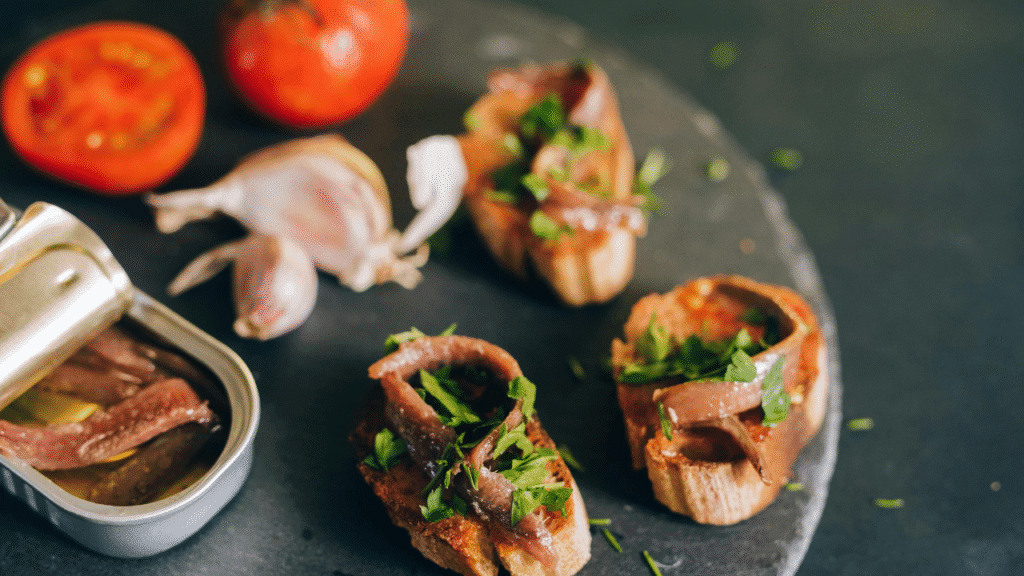
Anchovies may be tiny, but their impact on flavor is anything but. Whether they’re melting into a tomato sauce, powering a punchy Caesar dressing, or quietly elevating a vinaigrette, anchovies are one of the most effective—and underused—ingredients in your kitchen.
What makes them special isn’t just their boldness, but their versatility. With just a fillet or two, you can unlock layers of umami that make everything taste more savory, balanced, and craveable.
So if you’ve written off anchovies in the past, give them another shot—this time with a fresh perspective and a smart technique. Start small. Let them melt, blend, and disappear into your dish. You might be surprised how much you don’t taste them—and how much you love the flavor they leave behind.
Anchovy skeptics, beware: you’re one pasta sauce away from becoming a believer.
👉 Ready to cook smarter with anchovies? Try adding just one fillet to your next sauce or dressing—and taste the difference for yourself!
Want more ingredient spotlights and cooking tips? Be sure to follow us on social media and subscribe to the blog for more crave-worthy recipes, smart kitchen tips, and culinary deep dives.
Let’s keep cooking something amazing—together.
❓ Anchovy FAQ: Everything You’ve Wanted to Know
🎧 Prefer to listen instead? Check out the podcast version of this post—perfect for learning on the go or while you cook!
1. What are anchovies, and why do they have such a strong flavor reputation?
Anchovies are small, oily fish cured in salt and packed in oil. Their bold flavor comes from natural umami compounds and a fermentation process that breaks down proteins and intensifies taste. Think of them as tiny flavor bombs—like the fish version of aged cheese.
2. How do anchovies enhance flavor without making food taste fishy?
When melted into warm oil, anchovies dissolve completely and leave behind a savory richness, not a fishy taste. They blend into sauces and dressings, adding depth without standing out. The “fishy” myth usually comes from poor-quality anchovies or incorrect use.
3. What is umami, and how do anchovies deliver it?
Umami is the savory “fifth taste” that makes food taste rich and satisfying. Anchovies are packed with glutamates and inosinate, which boost umami naturally. Their curing process concentrates these compounds, making them one of the best umami boosters around.
4. How can I use anchovies in everyday cooking?
Use them in classics like Caesar dressing, puttanesca, and bagna cauda—or sneak them into tomato sauces, vinaigrettes, or compound butters. Add anchovies early so they melt into the dish. Even one fillet can transform the flavor.
5. What types of anchovies are available—and when should I use them?
Oil-packed fillets are great for melting into hot dishes. Anchovy paste is perfect for dressings and butter, while salt-packed fillets offer the most intense flavor. Fish sauce, made from fermented anchovies, adds liquid umami to Asian recipes.
6. Are anchovies sustainable and healthy?
Yes—anchovies are fast-growing, low on the food chain, and often harvested sustainably. They’re low in mercury and rich in omega-3s. Look for brands with sustainability certifications like MSC.
7. What are some tips for buying and storing anchovies?
Choose quality brands like Ortiz for balanced flavor, and store opened anchovies submerged in oil in the fridge. Paste lasts 6 months refrigerated, and salt-packed fillets can be re-salted and stored for longer. You can also freeze anchovy paste or butter in cubes for quick flavor boosts.
8. How are anchovies used in different cuisines?
Italy melts them into pasta sauces; Spain serves them fresh as boquerones. Southeast Asia ferments them into fish sauce, while Korea uses dried anchovies in broths and stir-fries. Across the world, anchovies quietly build flavor in countless ways.
💬 Got a favorite anchovy trick or recipe? Tag us @KitchenKnowHowHub on Instagram—we’d love to see how you’re using this tiny flavor booster in your kitchen.


